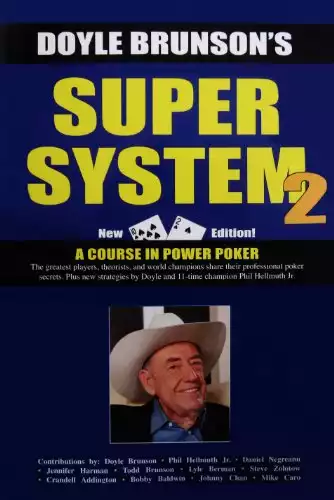Rules of the Game
Omaha High/Low Eight or Better (O8b) is a community card flop game where everyone is dealt four cards facedown instead of two and exactly two of their hole cards must be used to make a hand. The object of the game is to make the best high hand along with the best A-5 low. A qualifying low must be an eight or better. If there is no qualifying low hand then the high hand will scoop the entire pot.
O8b may be the second most popular poker variant; only Pot Limit Omaha high may contest that ranking. However, O8b is certainly the most popular game in regards to its inclusion within mixed games. So if your goal is to be an all around poker player O8b is certainly a game that you should a lot of time studying.
Starting Hand Standards
Most of the playable hands in O8b are low oriented because they can often end up in a highly valued free-roll position. For example, suppose you have A♥ 2♥ 3♠ 9♦ on a turn board of 4♣ 5♥ 7♥ T♠. Against someone with A♣ 4♥ 6♠ 8♠ that holds the nut straight you have the low side locked up and are free-rolling for the high with your flush draw. Thus in this particular matchup you are a 60% equity favorite.
Low hands are also valuable because they can put a lot of pressure on high hands and make them fold their equity the vast majority of the time. For example, suppose you open-raise A♥ 2♥ 3♠ 9♦ and get a call from K♠ Q♥ Q♦ T♦ from a player in the big blind. In straight Omaha High the big blind has quite a good hand. But in O8b his hand is handcuffed whenever there are two or more low cards on the flop, and this will happen approximately 60% of the time. On a flop of the 3♠ 7♠ 8♥ the high hand is forced to fold unless they have an irrational hatred of money. The A♥ 2♥ 3♠ 9♦ has just a pair of threes for high but with the low locked the low hand is a 71.5% equity favorite. Even if you change the flop to 3♠ 7♠ T♥ where the low is not yet made the low hand is a 58%/42% favorite. The player holding the nut low or the nut low draw has a lot of power and should put pressure on the other players to fold their high equity.
Hand selection is of upmost importance in O8b; probably more so than any other poker variant because if you play inferior hands you will constantly get squeezed and free-rolled and this is a recipe for disaster.
Most poker literature often describes O8b as a game of “pushing and pulling”, and while those concepts may have some merit in certain post flop decisions it less often does in regards to pre flop decisions. It is true that the best hands (due to the ability to make the nuts the both ways) crave multi-way pots, but open-limping in an attempt to “pull in” other players appears to be an inferior strategy for a variety of reasons.
Inferior hands will often call anyway thus you lose value by not raising. Also most mixed games are played seven handed or less so the number of players that may enter the pot is limited and limping allows the blinds to realize their equity. For example, suppose you open-limp 2♣ 3♣ 4♥ 6♦ from UTG seven handed, everyone else folds, and the big blind checks. I consider this to be a bad result. A completely random hand in the big blind has 53% equity against your holding. Sure he is out of position and will often have difficulty realizing his equity but there was no need to give him a free look at the flop.
If you get re-raised pre-flop it is not the end of the world because for most players they have just signaled 2-3 cards that they hold, e.g. AAXX or something like A2KX. If you limp and get raised their range is much wider so it is somewhat harder to make good decisions. With all of that being said, let’s discuss the various starting hand types:
A2 Hands– You are dealt a hand with these two cards approximately 6.4% of the time. Just having these two valuable cards is a license to play the vast majority of the time. An A2 is much more valuable when it is suited to the ace or has other prospects to go with it such as A2KQ, A245, and A2QQ.
It is also important though to not overvalue bad A2 hands; opening with A♠ 2♥ 8♦ 9♣ in early position is at best a marginal situation. You have few prospects for high and no counterfeit protection on the low side. Calling raises from tight players with this holding is a clear mistake. Calling several bets cold just because you hold A2 is a huge leak. It is highly likely that at least one other person has A2 and several low cards are out. In this situation you would much rather hold a high hand such as QJTT because it is a much more live hand considering the situation.
A3 Hands – While the vast majority of A2 hands are playable, A3 hands typically need something a little extra; especially in a raised pot. Specifically it requires one of the following to be playable in non-steal positions:
- Suited to the ace, e.g. A♣ 3♣ 8♥ T♦
- Two Broadway cards, e.g. A♣ 3♠ K♥ Q♦
- Another wheel card, e.g. A♣ 3♠ 5♥ J♦
- Two other low cards with high potential, e.g. A♣ 3♠ 6♥ 7♥
23 Hands – In order to be playable, the 23 hands definitely need much going for them as they lack the all-powerful ace. However, below are several hand types that can possibly be played:
- Two other good low cards, e.g. 2♣ 3♣ 4♥ 6♦
- High pair, e.g. 2♣ 3♣ K♥ K♦
- Two Broadway, e.g. 2♣ 3♣ K♥ Q♦
The KK23 hand may be one of the most overrated in O8b. Even if it is double suited it has one glaring flaw; the low needs an ace but if one appears then it destroys the power of the kings for high. If there is no ace on the flop then you are in a somewhat precarious middle position in a multi-way pot.
Alternatively any hand with 23 accompanied by two broad-way cards is a very intriguing holding. When an ace hits you are going to like a lot of flops; unless it is paired or contains a nine you will often have a nut low or at the very least lots of various possibilities. For example, on an AT5 flop the 2♣ 3♣ K♥ Q♦ has eight outs to a nut straight and another twelve outs for the nut low.
It is very important to note, however, that these ‘23’ hands mostly require an ace on the flop so if the pre-flop action is heavy then it is more likely than not most if not all are out in your opponent’s hands. For example, suppose you are in the big blind with 2♣ 3♣ 4♥ 5♥ and the action was raised and re-raised by solid players. Your hand is pretty but you have an easy fold as it is almost certain that two of the aces are out, and a decent chance that three are out. In addition, someone could easily have 23 in addition to their ace which further cripples your hand. However, in this situation I can’t wait to get into the pot with a high hand like Q♣ J♣ T♥ 9♥ as it is much more likely that the cards I need are live.
Other Low Hands – A hand with A4 or A5 is not playable on its own but a hand such as A♣ 4♣ 5♥ 6♦ is playable in most situations. You have nut flush possibilities and if you are lucky enough to flop a deuce and a three you have many wheel outs and six high straight outs. A♣ 4♣ 9♥ J♦ is not nearly as valuable; with that hand only a 235 on board will make you a low straight. A4 or A5 suited accompanied with any two broad-way cards are also playable under many circumstances.
Low hands such as 2♣ 4♣ 5♠ 7♥ should typically only be played when stealing blinds or defending them against a lone raiser from a steal position.
AAXX – Aces that are suited up with low cards are premium hands in O8b. AA2X has a lot of value especially if you can limit the field with a re-raise. However, marginal AA hands are some of the most overplayed and biggest money leakers in the game. many players cold call with their A2 hands but three bet when they have AA and in doing so divulge half of their hand.
Double suited aces such as A♣ A♥ 9♣ 7♥ have enough high value to justify seeing a flop regardless of the action before the flop. But take away the suits and you are left with a hand that is really only worth playing as a blind steal or as a blind defend against a late position raiser. Though I will defend my big blind with A♣ A♥ 9♠ 7♦ it is not a situation to adore. Even if you flop top set, it puts a low card on board and given card removal it’s likely my opponent has low hand without an ace so that card can easily give many low and high possibilities.
High Hands – High hands other than AAXX can be very profitable in O8b given the correct set of circumstances; however it is very important that all of your cards are very high. Premium Pot Limit Omaha High hands such as T♥ 9♥ 8♠ 7♠ are unplayable in high/low split. The problem is that when you have the nut straight it means there are three low cards on board so you will most likely be splitting the pot. And as was previously mentioned, two or more low cards will appear on the flop around 60% of the time. All this means that you must be very selective in the high hands that you play. Hands such as KQJT, AQQJ, and QJTT are what you are looking to play.
Further Learning
High Low Split Poker for Advanced Players by Ray Zee, (Rating 6/10) – This O8b section in this book is somewhat disappointing given how solid the other advanced works are from 2+2 publishing. None of the advice is “wrong”; it just feels as if the book doesn’t say very much. But some of the book is somewhat cringe worthy. For example there is a discussion stating that most raising is done to buy the button and not so much for value but with a hand like A♣ A♥ 2♣ 3♥ you should tend to go ahead and raise…
Super System 2 by Doyle Brunson (9/10) – The chapter on this game was authored by Bobby Baldwin (with some collaboration from Mark Gregorich) and serves as an excellent introduction to the game. It covers the vast majority of the basic strategy, delves into some advanced strategy, and heeding the advice within will certainly make you a tough opponent as you learn the nuances of the game.


